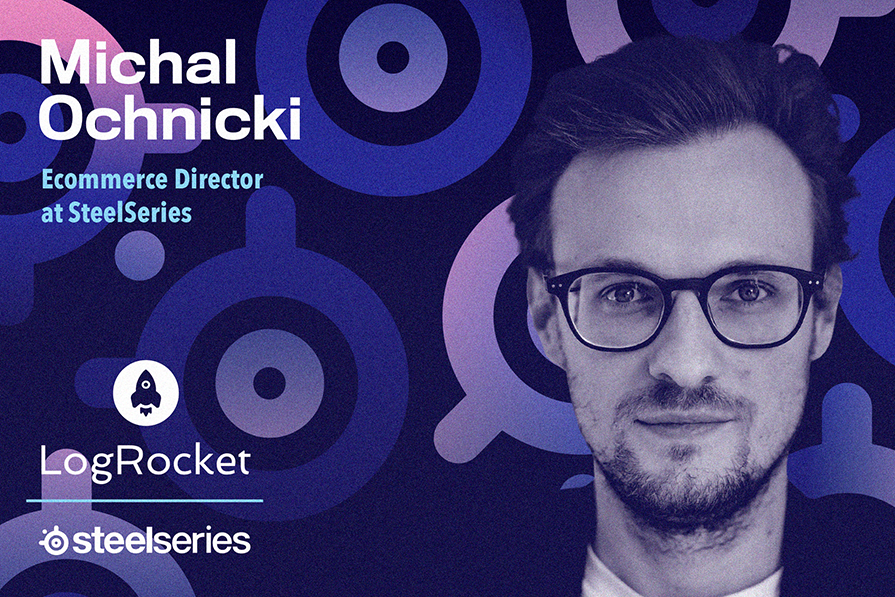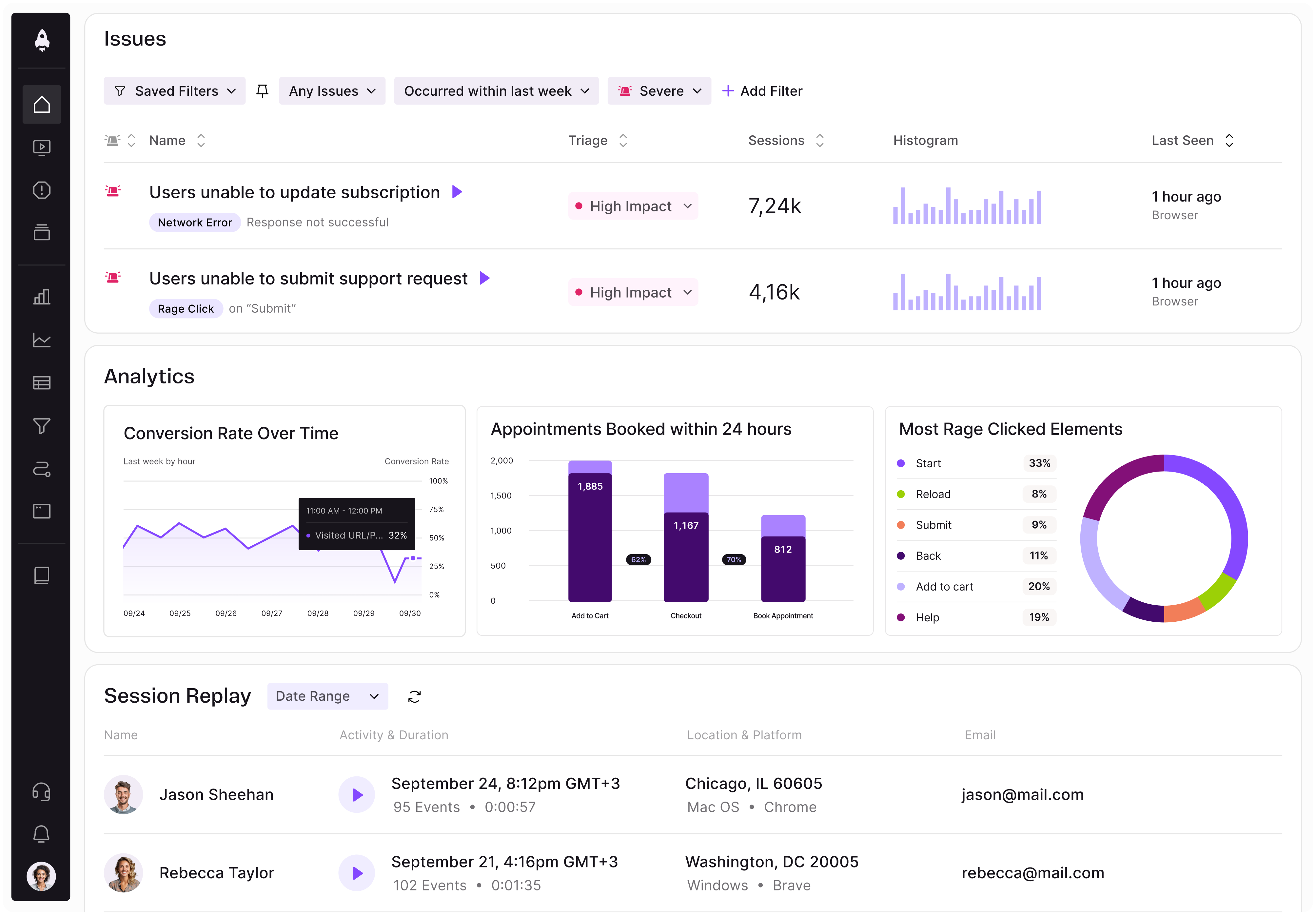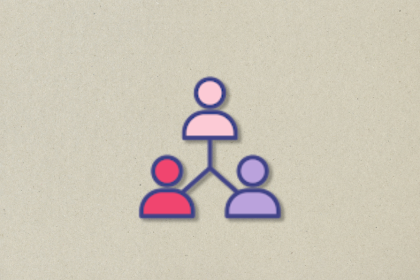Michal Ochnicki is Ecommerce Director at SteelSeries, a manufacturer of gaming peripherals and accessories. He began his career as an ecommerce store operations specialist at Jabra, a specialist audio and video technology company, before eventually leading ecommerce for Jabra’s EMEA and APAC regions. In his current role with SteelSeries, Michal oversees full P&L responsibility and focuses on driving growth through customer-centric innovation.

In our conversation, Michal talks about the importance of ensuring that the ecommerce side of a business is complementary to the whole organization — not just a separate unit with its own goals. He also shares strategies for introducing an ecommerce strategy, including communicating frequently and clearly with all stakeholders.
The main role lies within the company itself. It has to start with very clear communication around why we are doing this, what kind of benefit we’ll see, why this initiative makes sense now, and so on. Further, these messages have to come from the very top. At the end of the day, my role is to execute and make those plans come to fruition.
When it comes to the mindset shift, it’s all about answering those questions over and over again. Why is this, now, a vital part of the company’s strategy? How do we add value without interrupting the business that we’ve built so far? What is the value proposition? What can we do differently compared to the setup we have as a customer?
Highlight all of those possible positive things that can happen by embracing ecommerce. In the same breath, also explain why it will not interfere with whatever is going on right now. The goal is to grow the business overall, but not do it at the expense of the rest of the organization.
A good example is SteelSeries introducing value-added services. In our case, ecommerce was supposed not to interfere with the price level of the rest of the channel, but, at the same time, still needed to remain competitive.
We introduced a feature for personalized engraving on one of our products, and that was a service that we could not develop in just any place — it was on-demand and unique for each customer. The usual set of concerns was raised before we started even looking into the project. Why do we have to do it this way? Why can’t we develop it within the business we have at the moment? What about product quality and other obstacles that can make this project fail?
It was a careful discussion, and there was a long lead time to deliver this project and highlight the importance of personalization. This was something people were looking for. They usually don’t get it whenever and wherever they want, so we knew this would help us, as a .com business, to stand out. At the same time, it wouldn’t harm the rest of the business because it competes on a different level than the usual culprit of price or product availability.
We successfully moved through all those questions and challenges along the way and ultimately proved that we could increase the conversion rate on our website, all without interfering with the price itself. We built this small, different value proposition exclusive to the brand that was sold directly online.
It’s a combination, but the key is to communicate frequently and clearly. We cannot show up with an idea and implementation on the way without the buy-in from all the stakeholders. Otherwise, it’s deemed not to be successful. In this particular project, we didn’t have to provide weekly updates, but we gathered stakeholders in longer phases to address progress, answer questions, and mitigate any concerns.
The frequency of communication, as well as not just taking questions but addressing them, are milestones to keep a project running and eventually make it successful.
It differs from the very early days. When you start this kind of initiative in a mature business, it’s an eye-opener for everyone. This is a different kind of communication that shares that now, the strategy is moving in a new direction. Over time, this communication evolves from letting people know what’s coming into involving them in the process itself.
The process of scaling it up doesn’t happen overnight, so with a mature business, you need support. You don’t just build ecommerce as a completely standalone initiative. It’s a matrix you work in. You are dependent on many people, and it has to come in certain phases where you start with smaller things, integrations, and so on. As time goes on, you need more resources because you are growing the business, delivering more revenue, and need more hands to make it happen. It’s an ongoing, repetitive process of addressing the current needs, but also raising the expectations of what’s coming in the future.
I think it’s important to make sure that the business is complementary to the whole organization, and not like a separate unit with its own goals. One lesson I’ve learned is that everyone is accountable for the performance of an ecommerce business in the long run. We’ll start from being a single-digit value of the whole business, but with time, we get better. In our case, we were developing faster, and we needed more help, so the accountability for ecommerce results was not only with the ecommerce team itself, but was also a KPI for the rest of the sales organization.
When it comes to the regional aspect of things, it’s more about prioritization. In a global business, we operate between different ends of the world across time zones, so the most important thing is to prioritize what matters the most. We can double down in a smaller market, which looks great, but in the grand scheme, it might not deliver that impact we imagine. The key is to have a clear priority to focus on the most important markets.
Core markets need to come first, regardless of anything else. If they don’t deliver, the rest doesn’t matter. At the same time, of course, the more local we get, the more differentiated the business is, so we cannot completely neglect that aspect. Overall, there isn’t one solution to deliver business goals globally, but we also can’t forget about the smaller parts of the business — usually, where the innovation is coming from. It’s a matter of finding a balance against the priorities that we have.
It depends on how flexible the brand is. One of the examples we used to have was regarding our Asian markets. We used different colors when it came to the look and feel of the brand compared to the rest of the markets we served. We had an approach where we did not redesign the whole website just to address that, but redesigned specific pages and campaigns based on what we knew about these design preferences.
For example, certain landing or category pages were built out differently to resemble the look, feel, and expectations of local customers. It turned out to be successful, and we were able to prove why it was a necessary project. In my opinion, it’s always a good idea to run A/B tests to see what would happen if we did nothing versus if we played around a bit. We preserved our branding, but at the same time, made some design adjustments to match the expectations people had locally.
Some aspects don’t necessarily interfere with the brand itself. When it comes to features or services that are unique to certain markets, such as certain payment or delivery methods, it’s not necessarily a problem to implement them as soon as possible. We know that some of the services are only used in a given market or group of markets but not elsewhere, which means we just have to differentiate our offerings rather than add them to the existing options.
If the company is in the early days of setting up an ecommerce business, it’s easier to roll out as much as possible to ensure things are working and then optimize from there. Start with priorities — places where the smallest differences will make the biggest impact. Then, over time, once the business develops, teams can begin to improve items on a more local level.
I would say that it’s important to plan with expectations in mind, evaluate, optimize, and then start the whole process over again. In ecommerce, things change quite fast. Whatever the team has been working on for the last few months or years may not be the solution that will be as useful or as impactful in two years from now. That’s why it’s quite important to always challenge the status quo and look for other options to optimize.
Second, communication is so important. We cannot work in a silo with everyone finding out what’s going on at different times. That’s not going to work, and sooner rather than later, we will actually create more push-back than ways to support and complement the business. Even though the same questions come up over and over, people will see that we’re here to help, and because we share a common goal. Everyone can benefit from that in the long run.

LogRocket identifies friction points in the user experience so you can make informed decisions about product and design changes that must happen to hit your goals.
With LogRocket, you can understand the scope of the issues affecting your product and prioritize the changes that need to be made. LogRocket simplifies workflows by allowing Engineering, Product, UX, and Design teams to work from the same data as you, eliminating any confusion about what needs to be done.
Get your teams on the same page — try LogRocket today.

Promotions depend on proof. This guide shows PMs how to capture wins, feedback, and impact before review season.

Most teams fail at autonomy. Learn how clear rules help product teams move faster without micromanagement.

A practical framework for PMs to use AI in ideation without sacrificing judgment, strategy, or decision quality.

A practical five minute revenue estimation method to help product managers compare ideas, drop low impact features, and prioritize smarter.